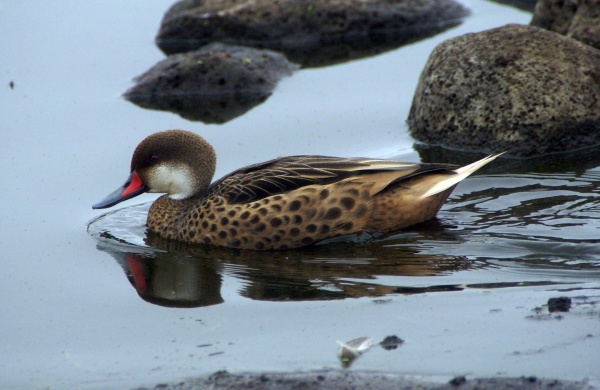Facts About White-cheeked pintail
The white-cheeked pintail, also known as the Bahama pintail or summer duck, is an enchanting species of dabbling duck found in numerous picturesque locations. First described by Carl Linnaeus in 1758, these ducks inhabit the Caribbean, South America, and the Galápagos Islands. They favor waters with slight salinity, such as brackish lakes, estuaries, and mangrove swamps.
There are three subspecies of these ducks: *A. b. bahamensis*, which inhabits the Caribbean and southern Florida; *A. b. rubirostris*, found in South America; and *A. b. galapagensis*, native to the Galápagos Islands.
These ducks are easily identifiable by their brown plumage, white cheeks, and distinctive red-based grey bill. Both males and females share a similar appearance, whereas juveniles lack the pinkish hue of adults. Their distinctive look definitely sets them apart from other duck species.
In their daily routine, white-cheeked pintails forage for food by dabbling, feeding on aquatic plants and small invertebrates. They are quite sedentary, constructing their nests on the ground beneath vegetation close to water.
Interestingly, these ducks are popular in wildfowl collections, and some escapees have been observed living in semi-wild conditions in Europe. Additionally, there is a special leucistic variant known as the silver Bahama pintail that is particularly favored in aviculture.
